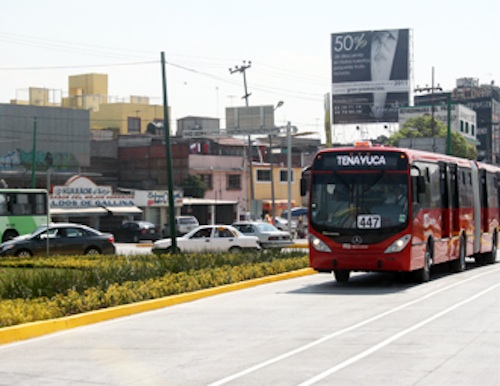Road transport and climate change: stepping off the greenhouse gas
Transport is Australia’s third largest and second fastest growing source of greenhouse gas (GHG) emissions. The road transport sector makes up 88% of total transport emissions and the projected emissions increase from 1990 to 2020 is 64%. Achieving prospective emission reduction targets will pose major challenges for the road transport sector. This paper investigates two targets for reducing Australian road transport greenhouse gasemissions, and what they might mean for the sector: emissions in 2020 being 20% below 2000 levels; and emissions in 2050 being 80% below 2000 levels. Six ways in which emissions might be reduced to achieve these targets are considered. The analysis suggests that major behavioural and technological changes will be required to deliver significant emission reductions, with very substantial reductions in vehicle emission intensity being absolutely vital to making major inroads in road transport GHG emissions.
Another BRT line hits the road in Mexico City

Mexico City launches third line of Metrobus BRT. System now boasts 67 kilometers of dedicated busways.
Source: EMBARQ
Photo: CTS-Mexico
Mexico City’s Metrobús launched Line 3 on the 8th of February 2011. The trunk line of the city’s five-year-old BRT system is expected to move 120,000 passengers per day between Tenayuca and Etiopía.
The new line will include 17 kilometers of exclusive bus lanes, 32 stations with pre-payment and level boarding, two terminals and two bus depots. The construction of the new line cost 800 million pesos. Mayor Marcelo Ebrard spoke admist banners ushering in the start of the new line, calling Metrobús an «integral system to provide mobility and sustainability to our city.» He acknowledged there was a lot debate about whether or not the line would be completed by this week, «but they were wrong,» he said. «We keep working to benefit the people, to improve their quality of life.»
With the completion of Line 3, Mexico City is now home to 67 kilometers of dedicated busways, 113 stations and 280 buses, moving 620,000 passengers per day and reducing an estimated 100,000 tons of carbon dioxide emissions every year.
Line 3 of Metrobus is different than the other routes because the separated bus lanes are paved with concrete on major streets like Vallejo, Balderas and Guerrero. «It is the most extensive concrete application in the city and will last up to 80 years,” Ebrard said. Like other parts of the system, the new stations are fully accessible for those with limited mobility, and they feature good lighting and closed circuit TV cameras for security.
Metrobús Director Guillermo Calderón said that the new line will serve about 120,000 passengers per day, adding up to 32 million trips per year on the BRT system. The new system will “connect with the backbone of our public transport system: the metro,” he said. With the additional line, the city hopes to convert car users to regular BRT riders. Fifteen percent of passengers on Line 1 and Line 2 have left their cars at home.
“With this new BRT line, we expect to reduce up to 100,000 car trips per day” Calderón said. On February 8, the trips on Line 3 were free, so users could get to know the route and enjoy the system.
Other notable guests who attended the inauguration ceremony included Secretary of Transport and Roads Armando Quintero and the Chairman of the Committee of Governors of the Federal District Legislative Assembly Alejandra Barrales.
The Center for Sustainable Transport in Mexico (CTS-México) helped to launch and implement the first line of Metrobús on Insurgentes Avenue. The organization has since provided input on design, implementation and operations for the past five years.
For the most recent addition to the city’s BRT, EMBARQ provided technical expertise on traffic and safety improvements, such as the location of the exclusive bus lanes and the design of intersections. CTS-México worked with Pedro Szasz as bus operations advisor and Greg Speier to perform road safety audits—careful examinations of a proposed project to ensure that it performs to a high standard from a road safety perspective. About 70% of their recommendations were incorporated in the final designs and actual construction of the new line, improving mobility and safety for passengers.
In particular, CTS-México recommended not using a dangerous contraflow lane, which in Line 2 has resulted in high road injuries and deaths. CTS-México also helped to define the final terms of reference for a fare collection system, with support from Andre Ampelas. The communications team at CTS-México also provided key input for the design, names and icons for the stations and other user information material.
During the first days of operation, the 11 staff members of CTS-México supported Metrobus with data collection, observations and analysis under actual service delivery conditions, making recommendations for improved quality of service, including frequency, occupancy, and user information needs.
¿Comments? ¿Opinions? ¿Similar News? Send them to us!
Tweet







